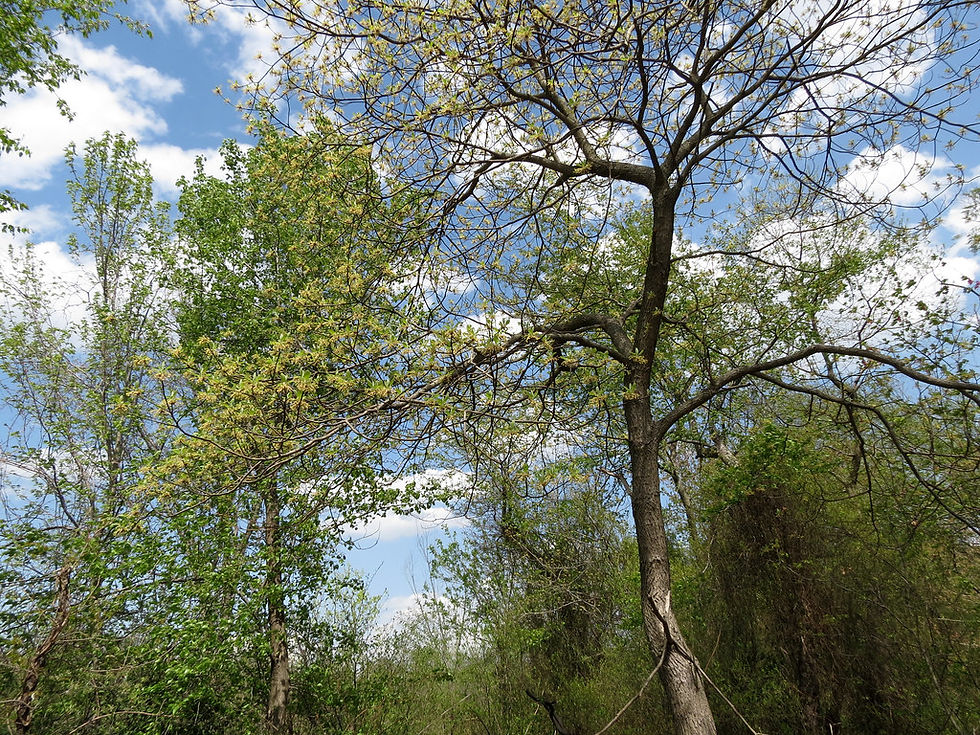Hot Tree -- Sassafras albidum
- Jennifer Anderson

- Feb 21, 2023
- 2 min read
Updated: Jan 3, 2024

Sassafras seemed to be on everyone's wish list last summer – not just because of the leaves’ cute shapes but also the glorious fall color.

Also known as the mitten tree, Sassafras sports leaves of varying lobes variously described as spoons, forks, mittens, boats and thumbs. You can find all three leaf shapes on a single tree, although the leaves tend to become more boat-like (one lobe) as the tree ages.

In fall those lobes take on brilliant red, orange and yellow colors, often on the same tree. It's the trees' way of alerting birds to the delicious blue-black fruits, which hang on red pedicels.
Only females produce the fruits, and only if there is a male nearby to pollinate its lovely – and fragrant! – yellow spring blooms.

Sassafras has “very high” pollinator values and is a larval host to dozens of butterfly and moth species including the Spicebush and Palamedes swallowtails, and the Imperial Moth.

Back in the day people ground Sassafras roots and leaves into flours and teas and used the oils in medicines and as flavor in chewing gum. Sassafras has since been banned by the FDA because of carcinogenic properties.
Sassafras can be grown as a single tree with a strong, central leader reaching heights up to 30 feet and sometimes taller with a spread of 12 to 25 feet. It likes sun to part sun and is adaptable to moist or dry soil. It's often found at the wood's edge.
Sources:
Cullina, W. Native Trees, Shrubs & Vines. Houghton Mifflin Company, 2002, p. 233.
Hartline, D. Sassafras. Georgia Native Plant Society. https://gnps.org/plant/sassafras-sassafras-albidum/
Lorimer, U. The Northeast Native Plant Primer. Timber Press, 2022, p. 77.
North Carolina Extension Gardener Plant Toolbox. https://plants.ces.ncsu.edu/plants/sassafras-albidum/





Comments